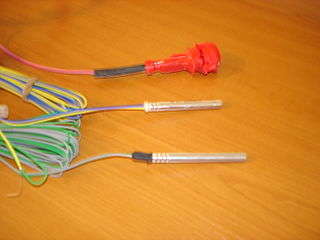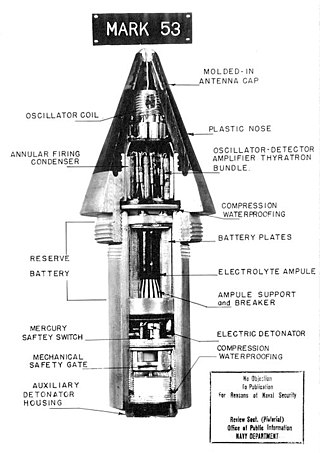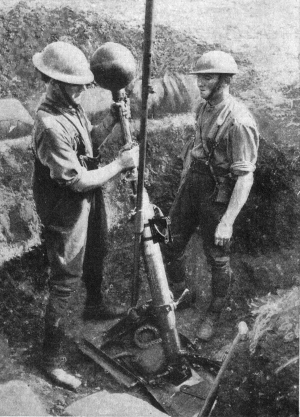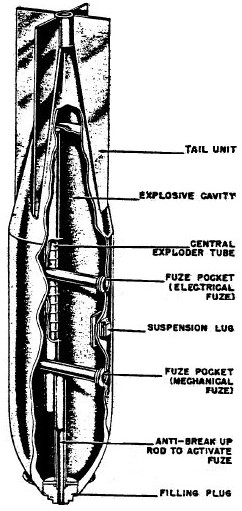
Shrapnel shells were anti-personnel artillery munitions that carried many individual bullets close to a target area and then ejected them to allow them to continue along the shell's trajectory and strike targets individually. They relied almost entirely on the shell's velocity for their lethality. The munition has been obsolete since the end of World War I for anti-personnel use; high-explosive shells superseded it for that role. The functioning and principles behind shrapnel shells are fundamentally different from high-explosive shell fragmentation. Shrapnel is named after Lieutenant-General Henry Shrapnel, a Royal Artillery officer, whose experiments, initially conducted on his own time and at his own expense, culminated in the design and development of a new type of artillery shell.

A detonator is a device used to make an explosive or explosive device explode. Detonators come in a variety of types, depending on how they are initiated and details of their inner working, which often involve several stages. Types of detonators include non-electric and electric. Non-electric detonators are typically stab or pyrotechnic while electric are typically "hot wire", exploding bridge wire or explosive foil.

A flash is a device used in photography that produces a brief burst of light at a color temperature of about 5500 K to help illuminate a scene. The main purpose of a flash is to illuminate a dark scene. Other uses are capturing quickly moving objects or changing the quality of light. Flash refers either to the flash of light itself or to the electronic flash unit discharging the light. Most current flash units are electronic, having evolved from single-use flashbulbs and flammable powders. Modern cameras often activate flash units automatically.

A proximity fuze is a fuze that detonates an explosive device automatically when it approaches within a certain distance of its target. Proximity fuzes are designed for elusive military targets such as airplanes and missiles, as well as ships at sea and ground forces. This sophisticated trigger mechanism may increase lethality by 5 to 10 times compared to the common contact fuze or timed fuze.

An improvised explosive device (IED) is a bomb constructed and deployed in ways other than in conventional military action. It may be constructed of conventional military explosives, such as an artillery shell, attached to a detonating mechanism. IEDs are commonly used as roadside bombs, or homemade bombs.

A shell, in a military context, is a projectile whose payload contains an explosive, incendiary, or other chemical filling. Originally it was called a bombshell, but "shell" has come to be unambiguous in a military context. A shell can hold a tracer.

In an explosive, pyrotechnic device, or military munition, a fuse is the part of the device that initiates function. In common usage, the word fuse is used indiscriminately. However, when being specific, the term fuse describes a simple pyrotechnic initiating device, like the cord on a firecracker whereas the term fuze is used when referring to a more sophisticated ignition device incorporating mechanical and/or electronic components, such as a proximity fuze for an M107 artillery shell, magnetic or acoustic fuze on a sea mine, spring-loaded grenade fuze, pencil detonator, or anti-handling device.

The Mk 2 grenade, also nicknamed the Pineapple is a fragmentation-type anti-personnel hand grenade introduced by the U.S. armed forces in 1918. It was the standard issue anti-personnel grenade used during World War II, and also saw limited service in later conflicts, including the Korean War and Vietnam War. Replacing the failed Mk 1 grenade of 1917, it was standardized in 1920 as the Mk II, and redesignated the Mk 2 on April 2, 1945.

Project Alberta, also known as Project A, was a section of the Manhattan Project which assisted in delivering the first nuclear weapons in the atomic bombing of Hiroshima and Nagasaki during World War II.

A fougasse is an improvised mortar constructed by making a hollow in the ground or rock and filling it with explosives and projectiles. The fougasse was used by Samuel Zimmermann at Augsburg in the sixteenth century, referred to by Vauban in the seventeenth century, and well known to military engineers by the mid-eighteenth century. This technique was used in several European wars, the American Revolution, and the American Civil War. The term is still used to describe such devices.

The Mle 1939 was a French anti-personnel bounding mine used at the start of the Second World War, it was developed largely in response to the German S-mine bounding mine. It saw very little service before the fall of France. The plans escaped to the US via Major Pierre Delalande, a member of the French Corps of Engineers, and were used as the basis for the American M2 bounding mine which saw wider service during the war but was considered largely ineffective. The M2 mine was replaced almost immediately afterwards with the M16 bounding mine, an almost exact copy of the German S-mine. The French also later produced a copy of the S-mine, the Mle 1951 mine.

The SC 250 was an air-dropped general purpose high-explosive bomb built by Germany during World War II and used extensively during that period. It could be carried by almost all German bomber aircraft, and was used to notable effect by the Junkers Ju 87 Stuka. The bomb's weight was about 250 kg, from which its designation was derived.

Fragmentation is the process by which the casing, shot, or other components of an anti-personnel weapon, bomb, barrel bomb, land mine, IED, artillery, mortar, tank gun, autocannon shell, rocket, missile, grenade, etc. are dispersed and/or shattered by the detonation of the explosive filler.

The 2 inch medium trench mortar, also known as the 2-inch howitzer, and nicknamed the "toffee apple" or "plum pudding" mortar, was a British smooth bore muzzle loading (SBML) medium trench mortar in use in World War I from mid-1915 to mid-1917. The designation "2-inch" refers to the mortar barrel, into which only the 22 in (560 mm) bomb shaft but not the bomb itself was inserted; the spherical bomb itself was actually 9 in (230 mm) in diameter and weighed 42 lb (19 kg), hence this weapon is more comparable to a standard mortar of approximately 5–6 in (130–150 mm) bore.
In military munitions, a fuze is the part of the device that initiates its function. In some applications, such as torpedoes, a fuze may be identified by function as the exploder. The relative complexity of even the earliest fuze designs can be seen in cutaway diagrams.

The SC 1000 or cylindrical explosive bomb was a large air-dropped general-purpose thin-cased high explosive demolition bomb used by Germany during World War II. Weighing more than 1,000 kg (2,200 lb), it was nicknamed the Hermann by the Germans in reference to the Luftwaffe commander, Hermann Göring.

The electric flash-lamp uses electric current to start flash powder burning, to provide a brief sudden burst of bright light. It was principally used for flash photography in the early 20th century but had other uses as well. Previously, photographers' flash powder, introduced in 1887 by Adolf Miethe and Johannes Gaedicke, had to be ignited manually, exposing the user to greater risk.

An artillery fuze or fuse is the type of munition fuze used with artillery munitions, typically projectiles fired by guns, howitzers and mortars. A fuze is a device that initiates an explosive function in a munition, most commonly causing it to detonate or release its contents, when its activation conditions are met. This action typically occurs a preset time after firing, or on physical contact with or detected proximity to the ground, a structure or other target. Fuze, a variant of fuse, is the official NATO spelling.
A contact fuze, impact fuze, percussion fuze or direct-action (D.A.) fuze (UK) is the fuze that is placed in the nose of a bomb or shell so that it will detonate on contact with a hard surface.

The SB 2500 (Spezialbombe) was a luftmine or aerial mine in English used by the Luftwaffe during World War II.


















